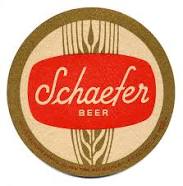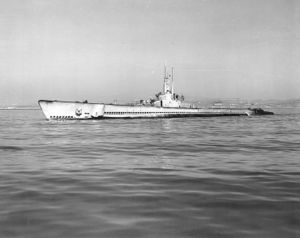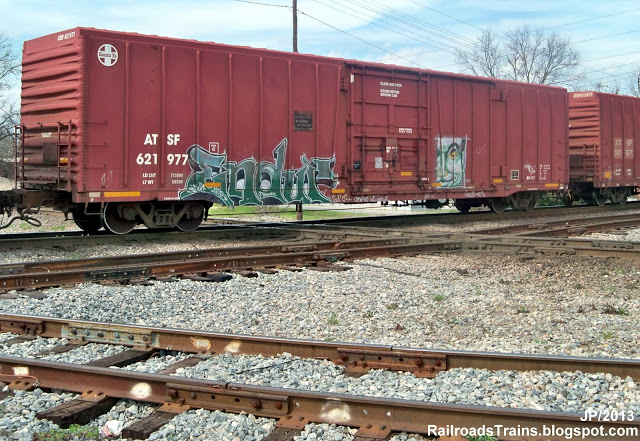Model Information: This model was first produced by Atlas in 2018. It was derived form the BX-166 tooling acquired from BLMA and was likely 'in the works' at BLMA prior to their acquisition by Atlas. This model features body-mounted couplers, chemically blackened wheels and excellent detail. It is very similar to the BLMA BX-166 model with the major exception that this model features Accumate couplers. The prototypes also differ in that the BX-166 has two doors on each side where the BX-177 has a single door on each side.
Prototype History: The BX-177 was a product of Santa Fe's Topeka, Kansas shops in the late 1970s. The BX-155, BX-161, BX-166 and BX-177 were all similar designs. The BX-177 was one of the single plug door designs and was 62 feet long. When built, they were painted in the railroad's Indian Red paint scheme with the 'Shock Control' logo on the sides. In later years, the cars were repainted in a simplified mineral red scheme. Some repainted cars had a small circle-cross herald applied in the upper left corner, while others had reporting marks only.
Many of these cars are still in service, four decades after being built. Some are used for beer service while others carry recycled paper. These cars have a single 8-foot insulated plug door on each side.
Many of these cars are still in service, four decades after being built. Some are used for beer service while others carry recycled paper. These cars have a single 8-foot insulated plug door on each side.
Road Name History: Schaefer Beer is a brand of American beer first produced in New York City during 1842 by the F. & M. Schaefer Brewing Company. The company relocated to Brooklyn in the early 20th century. It went public in 1968 with a $106 million stock offering.
In order to expand capacity for regional sales and fend off competition from national brands Schaefer began construction of a large modern brewery in Fogelsville, Pennsylvania that same year. Known as the Lehigh Valley Plant it opened in 1972. In 1974 it was expanded from its original 1,100,000 barrels-per-year capacity to 2,500,000 and then, in 1975, it expanded again to 5,000,000 barrels plus.
In the mid-1970s, Schaefer Beer was one of the top selling beers in the U.S., ranking as high as fifth in both the 1950 and 1970 rankings. Though it was producing more than twice as much beer in 1970 the gap between it and the top national brands was dramatically widening. Recognizing the handwriting on the wall, the Schaefer family sold out to the Stroh Brewery Company in 1981.
Stroh's then took over the Allentown plant in its own bid for national market share. It operated the plant until absorbed by Pabst Brewing Company in 1999. When Pabst opted to become a "virtual brewer" it sold the plant to Diageo just two years later. In 2008 Diageo sold it to the Boston Brewing Company, brewer of Samuel Adams beer.
Pabst retained the license to Schaefer and today outsources a reformulated brew it labels "Schaefer" and sells in niche markets in the United States.
From Wikipedia
In order to expand capacity for regional sales and fend off competition from national brands Schaefer began construction of a large modern brewery in Fogelsville, Pennsylvania that same year. Known as the Lehigh Valley Plant it opened in 1972. In 1974 it was expanded from its original 1,100,000 barrels-per-year capacity to 2,500,000 and then, in 1975, it expanded again to 5,000,000 barrels plus.
In the mid-1970s, Schaefer Beer was one of the top selling beers in the U.S., ranking as high as fifth in both the 1950 and 1970 rankings. Though it was producing more than twice as much beer in 1970 the gap between it and the top national brands was dramatically widening. Recognizing the handwriting on the wall, the Schaefer family sold out to the Stroh Brewery Company in 1981.
Stroh's then took over the Allentown plant in its own bid for national market share. It operated the plant until absorbed by Pabst Brewing Company in 1999. When Pabst opted to become a "virtual brewer" it sold the plant to Diageo just two years later. In 2008 Diageo sold it to the Boston Brewing Company, brewer of Samuel Adams beer.
Pabst retained the license to Schaefer and today outsources a reformulated brew it labels "Schaefer" and sells in niche markets in the United States.
From Wikipedia
Brand/Importer Information: In 1924 Stephan Schaffan, Sr. founded the Atlas Tool Company in Newark, New Jersey. In 1933 his son, Stephan Schaffan, Jr., came to work for his father at the age of sixteen. Steve Jr. built model airplanes as a hobby and frequented a local hobby shop. Being an enterprising young man, he would often ask the owner if there was anything he could do to earn some extra spending money. Tired of listening to his requests, the hobby-store owner threw some model railroad track parts his way and said, "Here, see if you can improve on this".
In those days, railroad modelers had to assemble and build everything from scratch. Steve Jr. created a "switch kit" which sold so well, that the entire family worked on them in the basement at night, while doing business as usual in the machine shop during the day.
Subsequently, Steve Jr. engineered the stapling of rail to fiber track, along with inventing the first practical rail joiner and pre-assembled turnouts and flexible track. All of these products, and more, helped to popularize model railroading and assisted in the creation of a mass-market hobby. The budding entrepreneur quickly outgrew the limitations of a basement and small garage operation. Realizing they could actually make a living selling track and related products, Steve and his father had the first factory built in Hillside, New Jersey at 413 Florence Avenue in 1947. On September 30, 1949, the Atlas Tool Company was officially incorporated as a New Jersey company.
In 1985, Steve was honored posthumously for his inventions by the Model Railroad Industry Association and was inducted into the Model Railroad Industry Hall of Fame in Baltimore, Maryland. In addition, Steve was nominated and entered into the National Model Railroad Association Pioneers of Model Railroading in 1995.
In the early 1990s, the Atlas Tool Company changed its name to Atlas Model Railroad Company, Inc.
In those days, railroad modelers had to assemble and build everything from scratch. Steve Jr. created a "switch kit" which sold so well, that the entire family worked on them in the basement at night, while doing business as usual in the machine shop during the day.
Subsequently, Steve Jr. engineered the stapling of rail to fiber track, along with inventing the first practical rail joiner and pre-assembled turnouts and flexible track. All of these products, and more, helped to popularize model railroading and assisted in the creation of a mass-market hobby. The budding entrepreneur quickly outgrew the limitations of a basement and small garage operation. Realizing they could actually make a living selling track and related products, Steve and his father had the first factory built in Hillside, New Jersey at 413 Florence Avenue in 1947. On September 30, 1949, the Atlas Tool Company was officially incorporated as a New Jersey company.
In 1985, Steve was honored posthumously for his inventions by the Model Railroad Industry Association and was inducted into the Model Railroad Industry Hall of Fame in Baltimore, Maryland. In addition, Steve was nominated and entered into the National Model Railroad Association Pioneers of Model Railroading in 1995.
In the early 1990s, the Atlas Tool Company changed its name to Atlas Model Railroad Company, Inc.
Item created by: CNW400 on 2023-07-12 17:18:45
If you see errors or missing data in this entry, please feel free to log in and edit it. Anyone with a Gmail account can log in instantly.
If you see errors or missing data in this entry, please feel free to log in and edit it. Anyone with a Gmail account can log in instantly.











